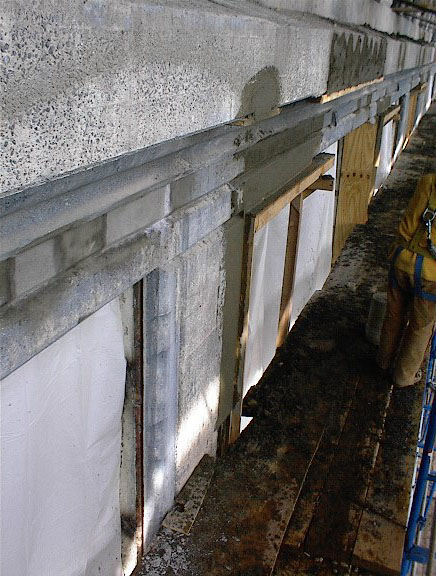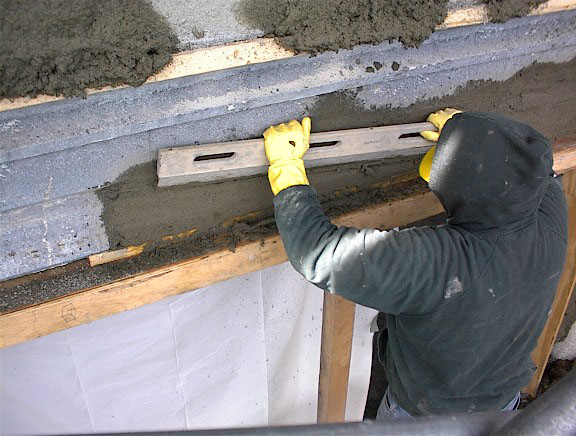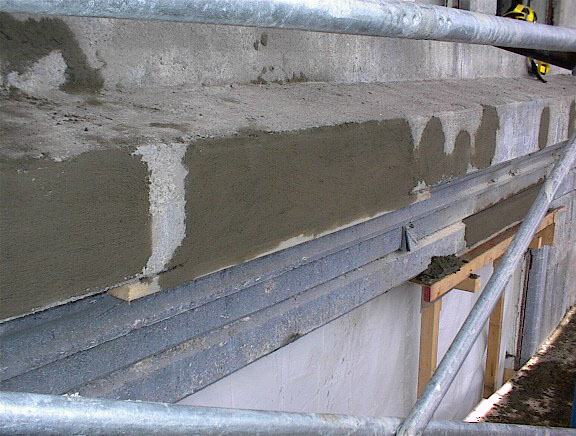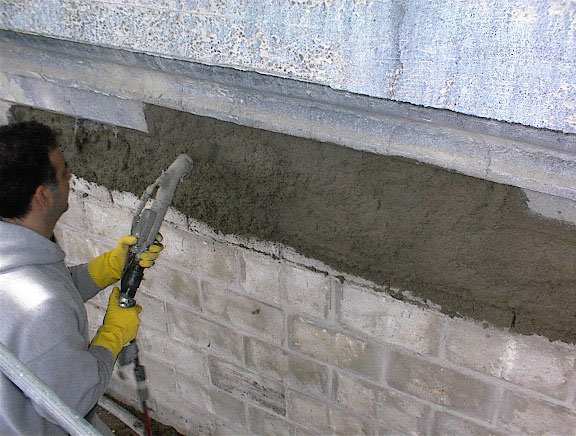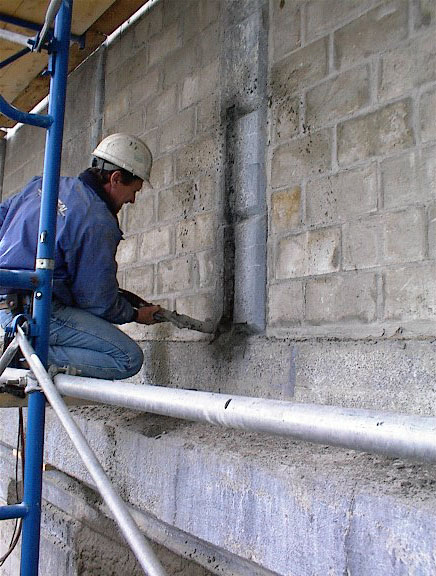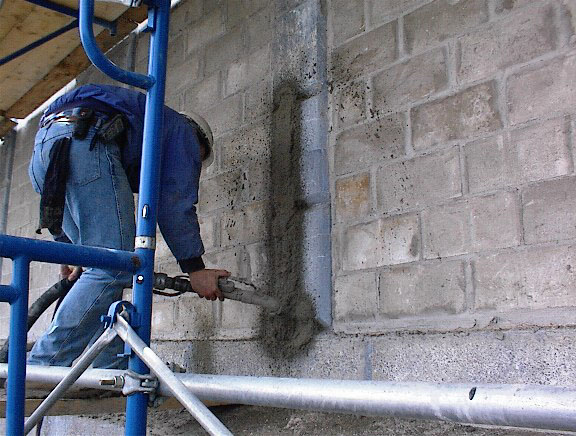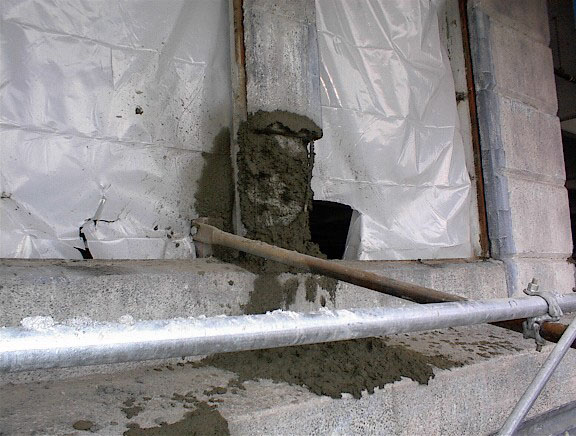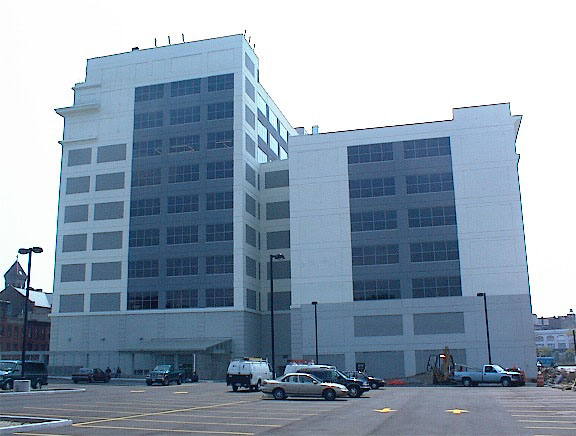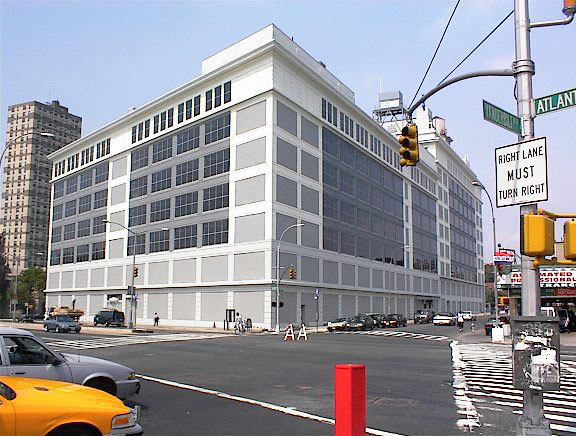
The Atlantic Telecom Building, originally known simply as 470 Vanderbilt, previously served as a manufacturing facility but had been vacant for several years. The repair and restoration of this eight-story, 750,000-square-foot office building was the largest gut rehab project in the United States at the time the work was performed. The building is now equipped with fiber optics and redundant power systems, making it particularly well suited to serve companies in the telecommunications industry.
Graciano was responsible for masonry restoration which included:
- Demolition and removal of failing concrete
- Preparation and installation of shotcrete
- Forming and finishing to match existing façade
- Applying waterproofing and aesthetic, color-matched elastomer coating to the façade
- Patching spalls on the interior and exterior of the building
Project Details
Name: Atlantic Telecom Building
Completion Date: 8/1/2001
Owner: The Spector Group
Architect: Super Structures, consultants for the renovation of the façade
Manager: Structure Tone Inc.
Others: Thornton Tomasetti, overseeing interior repairs
Project Included
- Wet & Dry Shotcrete
- Vertical & Overhead Patching
- Pressure Washing
- Partial Depth Concrete Repair
- Masonry Surface Rehabilitation
- Concrete Restoration
Glossary Terms
Traffic CoatingsTraffic coatings protect concrete surfaces from wear and tear caused by automobiles, machinery or pedestrian traffic. Most commonly formulated from an epoxy base, these coatings seal out moisture and damaging materials such as salts and oils. They are frequently impregnated with fine aggregates to improve traction and to minimize slipping hazards.
Structural RepairsMost concrete structures are reinforced by reinforcement rods (“rebar”) or structural steel. If the concrete skin of the structure has been damaged or has deteriorated, it is frequently necessary to restore or replace the steel substructure. In cases where the building has been built with little steel in the structure, it is frequently necessary to employ and anchoring system to stabilize the building before repairs can be made.
ShotcreteShotcrete is a material that combines concrete with compressed air. The mixture is pumped through a hose at high pressure, and is then applied to the desired surface. The force of the air pressure consolidates the material on the surface. Shotcrete can be formulated in one of two ways. The wet method premixes the concrete with water before it is pumped through the high–pressure hose. The dry method involves sucking the dry materials into the application system, combining them with water within the hose, and then apply them to the final surface.
SealingSealing effectively closes the porous surface of concrete and makes it more impervious to damaging substances, such as gasoline, oils or melting agents. Sealants are available in clear formulations, for high visibility, high aesthetic areas, or in urethane formulations for high–traffic areas, such as parking decks or industrial floors.
Polymer-Modified Mortar RepairsPolymer-modified mortar repairs involve the addition of plasticizers to traditional mortar. These additives improve the mechanical performance of the mortars by improving adhesion qualities, extending working times and improving hot weather workability. Polymer-modified mortars can also offer improved chemical resistance, higher flow, increased flexibility and better levels of compressive and tensile strength.
Parking Deck RepairParking deck repairs frequently involve repairs to both the deck surface and to overhead concrete structures that may have been damaged by water infiltration or exposure to melting agents. Repairs can take the form of partial–depth repairs, where a damaged area is filled and sealed, or through–depth repairs, where concrete is removed through to the other side of the damaged surface and then replaced. Repairs may also be made to vertical surfaces clad in concrete or masonry materials, or to overhead surfaces, such as ceilings.
Façade RepairsFaçade repairs involve removing damaged or degrading concrete from the surfaces of a structure, stabilizing the repair site, and filling any voids or cracks with new material that has been formulated to match the color and texture of the existing material that surrounds the repair. Façade repairs can also demand the creation of customized forms to allow for replication of cast–in–place detail.
DemolitionDemolition entails the removal of damaged or undesired concrete. It is most frequently accomplished with a jackhammer or another piece of pneumatic equipment.
Cementitious CoatingsCementitious coatings are generally comprised of Portland cement that has been combined with a vermiculite or perlite premix. These coatings are used to provide fire protection on steel or concrete surfaces, and are typically sprayed on while a structure is under construction.
Balcony RepairsBalcony repairs typically involve structural stabilization and replacement of damaged or missing components. In many cases, due to water infiltration or damage from the environment, it is necessary to remove the facing surfaces and decking materials from a balcony, stabilize the steel framework that ties the structure to the building, and then replace the facing surfaces with new or recovered material.

